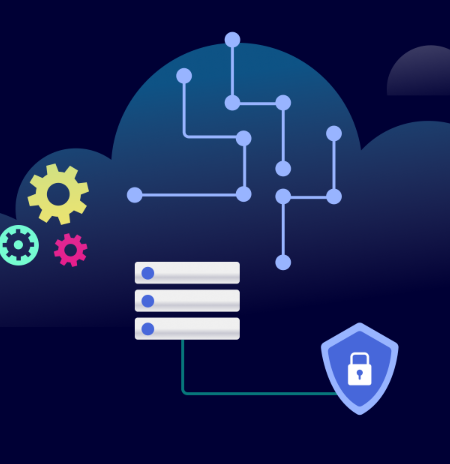Security Posture Management: The Overlooked Essential in a Complete Cybersecurity Program
- 70 Views
- admin
- 10/18/2024
- Cybersecurity
In the world of cybersecurity, managing risk effectively requires more than checking off compliance boxes or installing firewalls. True resilience comes from a comprehensive understanding of your organization’s security posture—an evolving combination of technologies, processes, policies, and behaviors that define how well your business can prevent, detect, and respond to threats.
Many security teams concentrate too heavily on a few technical controls or compliance objectives, leaving critical gaps unaddressed. A narrow approach limits an organization’s ability to anticipate emerging risks or recover from unexpected incidents. That’s where security posture management comes in—it connects the dots and builds a full-spectrum view of your organization’s cybersecurity health.
Key Components of a Strong Security Posture
Access Control
Controlling who has access to your most valuable systems and data is foundational. This involves managing user credentials, enforcing least-privilege principles, and regularly reviewing access rights. Neglecting access control can lead to unauthorized data exposure—especially from insider threats or accounts left active after employee departures.
Network Protection
A secure network forms the first line of defense against cyber intrusions. Tools like firewalls, intrusion prevention systems, and real-time traffic monitoring are essential for spotting suspicious activity early and blocking potential breaches before they spread.
Device Security
Every device connected to your network represents a potential point of vulnerability. Laptops, mobile phones, and smart devices must be properly secured and kept up to date. Endpoint protection solutions, including antivirus software and device monitoring, help reduce the risk from compromised endpoints.
Data Safeguarding
Sensitive information must be protected both in transit and at rest. Encryption, data loss prevention (DLP), and robust access management are critical for protecting against leaks and maintaining customer trust.
Incident Preparedness
An incident response plan is essential for minimizing the impact of cyber attacks. It outlines roles, communication plans, and escalation procedures. Regular testing ensures your team can act quickly and decisively when something goes wrong.
Security Awareness
Even with strong technical defenses, human error remains one of the most common causes of breaches. Ongoing employee training on phishing, password hygiene, and data handling can make a big difference in reducing risk across the organization.
Vulnerability Identification
Finding and fixing weak spots in your systems is a continuous task. Security teams must conduct regular scans, run penetration tests, and stay on top of known vulnerabilities to ensure they’re addressed before attackers exploit them.
Patch Updates
Unpatched systems are among the most common entry points for attackers. A patch management process ensures that updates and security fixes are applied quickly and consistently across all systems.
Policy Enforcement
Clear and enforceable security policies define how data and technology are used across the organization. Policies must be reviewed and updated regularly to reflect changes in threats, business operations, and regulatory requirements.
Third-Party Oversight
Vendors and service providers can introduce risk if not properly vetted. Security teams must evaluate the practices of all partners that have access to critical systems or data and continuously monitor their compliance with security expectations.
Physical Protection
While often overshadowed by digital concerns, physical security plays a role in preventing unauthorized access to critical infrastructure like data centers and server rooms.
Compliance Alignment
Meeting the requirements of regulations such as GDPR, HIPAA, and industry-specific frameworks is non-negotiable. But it’s important to remember that compliance doesn’t guarantee security—it’s just one part of a larger risk strategy.
Cloud Security
Cloud environments introduce their own challenges. With most businesses now operating in hybrid or fully cloud-based infrastructures, misconfigurations and overlooked cloud resources can become easy targets. Securing the cloud requires dedicated tools and visibility.
Risk Assessments
Regular evaluations of your security environment help you understand your exposure and prioritize improvements. Assessments identify weaknesses, quantify risk, and guide decisions on where to invest resources.
Manual vs. Automated Approaches
Security assessments can be carried out using spreadsheets or automation. Manual methods often lag behind, requiring analysts to process large volumes of data that may already be outdated by the time the assessment is finished. Automated tools streamline this process, enabling faster, more accurate risk insights across multiple frameworks and standards.
Making Security Posture Management Work
Effective posture management isn’t a one-time project—it’s a continuous process. Routine audits, periodic risk assessments, and simulated attack exercises are vital to identify gaps and keep pace with evolving threats.
Organizations may choose between managing each security function separately through specialized tools or adopting a centralized platform that integrates multiple components. While individual solutions offer depth, they can introduce operational complexity and integration challenges. Unified platforms, on the other hand, improve efficiency and visibility by consolidating controls and data across the enterprise.
Conclusion
Security posture management brings cohesion to your cybersecurity program. By focusing on all critical areas—technical controls, human behavior, policies, and third-party interactions—you build a foundation that’s not only compliant, but also resilient and adaptive. In an era where cyber threats are increasingly sophisticated and persistent, this comprehensive approach is no longer optional—it’s essential.
Recent Posts
- How AI is Revolutionizing Architectural Design: A Look at Tools, Trends, and the Future
- Streamlining Cyber Risk Assessments Through Automation
- Understanding the Difference Between Blockchain and Distributed Ledger Technology
- Is Bitcoin Mining Still a Viable Venture in 2025?
- Exploring AI: Unveiling Possibilities, Challenges, and Future Implications


